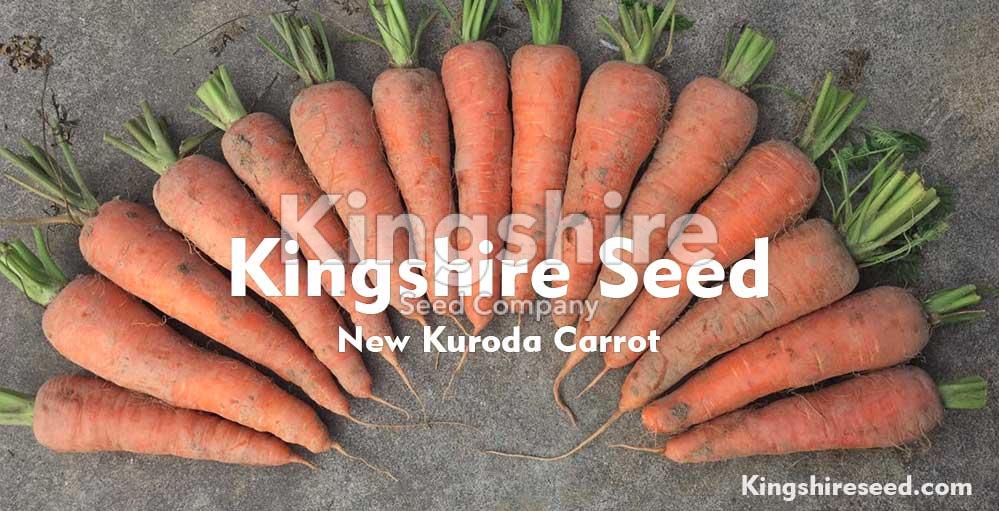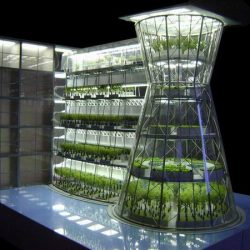Carrots: Planting, Growing and Harvesting Carrot Plants Commercial Growing
Carrot (Daucus carota L.) is a biennial crop. The leaves are feather like with long petioles and they are severally divided into sections. The sheath of the petiole opens at the base. The flowers are white, small and borne in compound terminal umbels. Carrot is propagated by seeds. The thickened fleshy root is the edible portion. The shape, color and size of the root vary according to varieties.
Carrot originated from Central Asia with Afghanistan as the primary center of origin. Carrot comes in different colors – white, yellow, orange, purple and violet. Several hundred varieties exist, but there are four main types:
Imperator – has long roots (23-25cm), small shoulders and tapered tip;
Nantes – has medium length roots (15cm), uniform diameter and blunt tip;
Danvers – is large, with medium length roots (18cm), a processing type used for dicing and slicing; and
Chantenay – is short (13cm) with large shoulders, and usually a large, distinctly colored core.
Climatic and Soil Requirements
Carrot grows best in high elevation areas 1,000 m above sea level. Under such conditions, carrots are more succulent and less fibrous, with smother texture and deeper color. Roots attain optimal color when air temperature is 15-21 °C, but colors deepen rapidly in this temperature range about three weeks before harvest. Temperature below 10 °C and above 30 °C reduce quality and yield of carrots.
Carrot can be planted in low and mid elevation areas, but only during the coolest months. Otherwise, the roots will be fibrous, lighter in color, and deformed.
Carrots grows best in deep sandy loam soil rich in organic matter with pH ranging from 5.5 to 6.8.
Land Preparation
The land should be plowed and harrowed several times until a fine filth is attained. Prepare raised beds 20cm high, 0.7-0.8m wide, and 0.3m apart. Pulverize the soil and incorporate fully decomposed chicken at 3-5 t/ha and complete fertilizer at 3-5 bags/ha one week before planting.
Thorough field preparation is very necessary for the plant because it is small- seeded and usually planted direct in the field. Crops planted in a well-prepared field seem to have better well-shaped, marketable roots than plants grown in a poorly prepared soil which tend to have irregularly-shaped roots.
Crop Establishment
One hectare of carrots would require 6 to 8 kg seeds. The seeds are uniformly distributed in furrows and covered with fine soil at about 2 cm thick. It may take about 2 weeks from sowing to complete the emergence of the seedlings.
Nutrient Management
The general fertilizer recommendation is 126 kg/ha N, 71 kg/ha P2O5, and 175 kg/ha K2O. However, fertilization should be based on soil analysis. Apply organic fertilizers such as well decomposed manure or compost at 3-5 t/ha 1-2 weeks before planting to contribute 60-100 kg NPK and micronutrients. The remaining nutrient requirement can be applied at 30 days from sowing, just after weeding and thinning. Cover the fertilizer with soil during hilling up. Tea manure and fermented plant juice (FPJ) may also be used to improve soil fertility.
To prepare tea manure, soak ¾ sack of dried cow or horse manure in ¾ plastic drum (200-L capacity) of water. Soak for 5-7 days with frequent stirring. Dilute tea manure in up to 20 parts water and spray on the leavers at 1-2 weeks interval. To prepare FPJ, mix three parts chopped plant shoots or banana trunk with one part raw sugar or molasses. Ferment mixture for 5-7 days. Dilute 1 part FPJ to 20-40 parts water and drench on the plots or use as foliar fertilizer.
Water Management
Carrot needs a lot of moisture during the first 30 days of growth. Irregular watering leads to cracking and forking. Water every 5-7 days or as needed.
Put mulch after planting and water the beds. Mulch with rice straws or any other mulching materials to minimize weed growth and moisture loss. After two weeks or after the seeds have germinated, remove the mulch and put mulch between rows.
Thinning and Hilling Up
Thinning is done to provide enough space to the growing roots. Start thinning at 30 days after sowing, at a spacing of 10cm between plants. Hill up immediately after thinning to cover the sidedressed fertilizer. Second weeding and hilling up is done 45 days after the first weeding.
Pest Management
Pests
Cutworm
Spray with biological insecticide such as Bacillus thuringiensis (Bt) and Nuclear Polyhedrosis Virus (NPV) following the recommended rates. If needed, spray with inseticide like fipronil, fevalerate, permethrin, or other registered chemicals following the recommended rates.
Mole Cricket
Use biological sprays such as Bt and NPV. Spray with pesticides such as diazinon following the recommended rates. Use carbofuran following the recommended rates, as a last resort.
Slugs
Spread rice hull ash or slug pellets around the plots just to cover the soil
Aphids
Spray with hot pepper extract (100g macerated hot pepper / 16L water). If needed, spray carbaryl or malathion following the recommended rates.
Armyworm
Spray with Bt following the recommended rates. Maintain populations of ground beetles and tachinid flies. Spread ash baits along the field borders. If needed, spray recommended pesticide such as carbaryl, fenvalerate, or malathion following the recommended rates.
Diseases
Powdery Mildew
Spray sulfur based fungicides or mancozeb following the recommended rates
Bacterial Soft Rot
Avoid injury to the roots during harvest and remove the infected roots.
Root-knot
Practice crop rotation with non-host crops like corn. Plant marigold by broadcasting the seeds in between seasons. Plow under the marigold plants at land preparation. Marigold may also be intercropped along borders and alleys.
Alternaria blight
Use resistant or tolerant varieties such as Terracotta and S-505. If infection is severe, spray appropriate fungicides such as mancozeb and chlorothalonil following the recommended rates.
Harvest Management
Carrots can be harvested 2-3 months after sowing, depending on the variety used. Harvest the carrots if the leaves turn yellowish and the roots are big enough. Loosen the soil using a spading fork then pull the carrot roots carefully. Remove split roots. Haul the roots to the packing house immediately after harvest. Yields are usually 20-30 t/ha under favorable and good management.
Postharvest Handling
Cut the leaves 5-8cm from the shoulder. Wash the roots and air-dry. Sort and classify according to size and appearance. Roots that are cracked, deformed, and forked are considered non-marketable, but can still be cooked or processed
Uses, Processing and Utilization
Carrot is used in many preparations. It can be a principal ingredient of a dish like carrot salads. It gives attractive appearance and color to pickles. It is excellent for garnishing and very rich in vitamins (carotene).
References
Production guide on Carrot. Department Of Agriculture RFU-10. Northern Mindanao Integrated Agricultural Research Center. Brochure
Package of Technology of Different Vegetable Crops: Technology Generation and Dissemination for the Growth and Development of Vegetable Industry.2005.DA-RFU 4A& Bureau of Agricultural Research, Diliman Quezon City.
http://agri10.norminet.org.ph/About%20Us/Research&Technology/carrots.htm
Source: bar.gov.ph
 English
English
 German
German
 French
French





